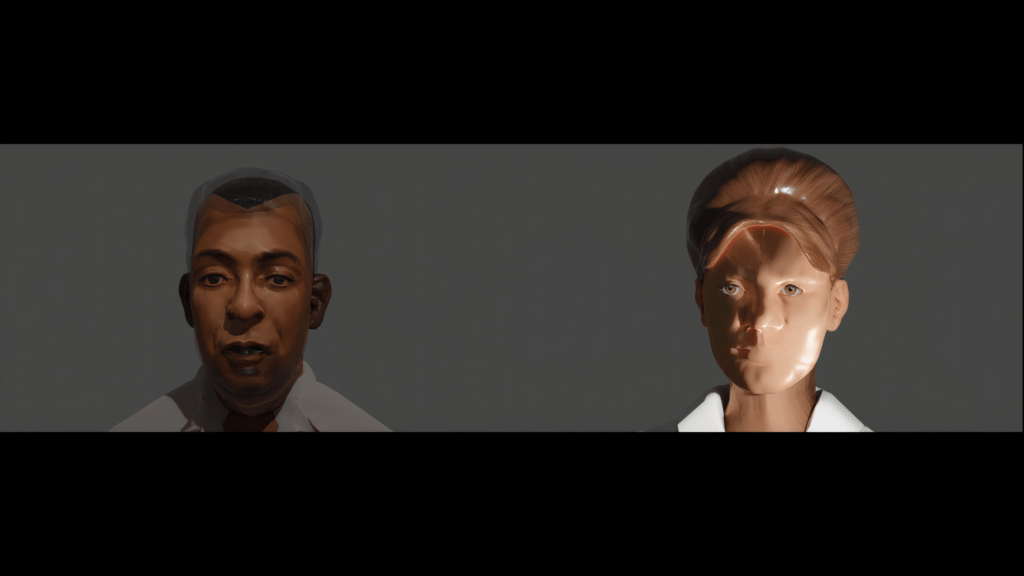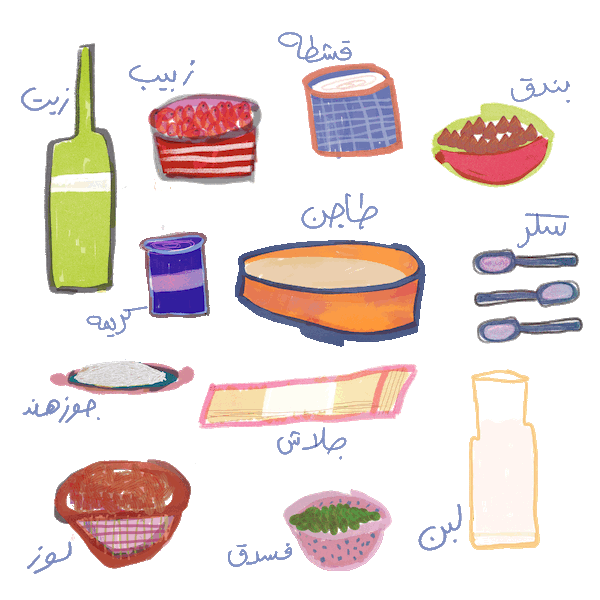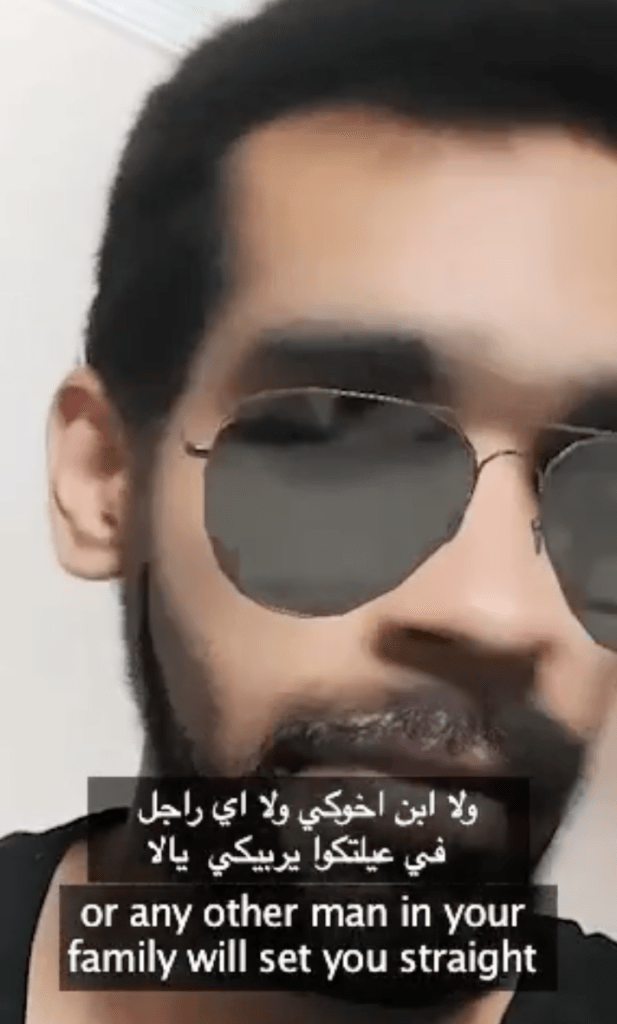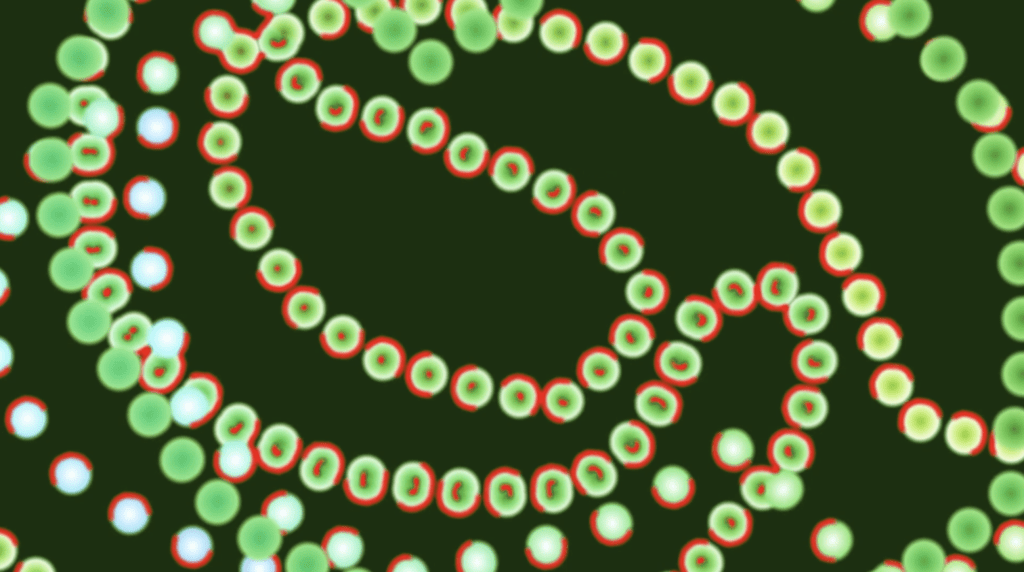Creative Impact Lab Cairo (2021) converged an interdisciplinary group of 18 Egypt-based visual artists, sound artists, performance artists, film and media artists, designers, writers, and scholars to address the issue of women’s empowerment in Egypt. On what is hopefully the tail end of the COVID-19 global pandemic, the lab was conducted entirely virtually. Despite our distance, I’ve found it truly remarkable how our group forged an intimate and intensive pocket of time together. I’m amazed by how much ground we covered in just a few short weeks.

During the first half of the lab, I had the privilege of leading this group in a series of activities spanning five workshop days. Riffing on the theme of “backups” which I introduced in an artist talk that kicked off the lab, our first four workshop days were aimed at generating content to seed a community media library shared by the group and were organized around four themes. Day by day, our themes were “Time machine backups” (including the concept of “forking” in open source software development and the metaphor of “backstops” in a time capsule free write); “Backpacks” (including an introduction to object-oriented feminist analysis and collectively live-translating Ursula K. Le Guin’s “The Carrier Bag Theory of Fiction”); “Backchannels” (delving directly into the question of what can and can’t be “said” about women’s empowerment and including discussions of secret messages and security protocols for communication); and “Back-to-back media” (including considering the affordances of B-sides and multiple-sided media). Our activities spanned sharing a Zoom dinner, filling and swapping bags, open discussion forums, whiteboard brainstorm sessions, silent COLO sessions, active listening, meditative gift giving, guided free writes, and peer-to-peer skillshares.

![]()
Two of the activities that made the biggest impression on me were the collaborative real-time translation of Le Guin’s “The Carrier Bag Theory of Fiction” and our group discussion “Broadcasts and Backchannels” about what can and can’t be said about women’s empowerment in Egypt. These exercises were extremely different in form and content; yet both revealed to me the formidable collective intelligence that was arising out of this group, and that these exercises were helping to hone. Both exercises highlighted for me the necessity of addressing the social issues at the heart of our lab as fundamentally multifaceted, and underscored the significance of a polyvocal approach to speaking to these issues as such in order to do justice to the complex intersectional realities of Egyptian cultural experience. For every argument raised, there is another side to consider. And for every strong statement voiced righteously, there is another—perhaps softer—voice simultaneously yearning to be heard.![]()

After opening our time capsules at the end of our fourth workshop day, groups started to form around project ideas. On our fifth workshop day, each project was proposed before two guest critics, Elham Khattab of Out of the Circle, and Maya Hilbert of New Media Artspace at Baruch College. With feedback from Elham and Maya, the participants then launched into an intensive 12-day development period during which they created new media art works-in-progress while I curated the proposed works in a virtual exhibition. Drawing on the notion of multi-sidedness, and inspired by our “Back-to-back media” day, I titled the exhibition “Recto & Verso,” referencing a term from book design that refers to the front and back sides of a page.

The works-in-progress that emerged speak powerfully to this notion. I’ve been floored by the eloquence and intensity of the work that was created during this short time. I invite everyone to visit the virtual exhibition at cil.medrar.org. Like me, I’m sure you will be excited to think about how the projects that were fomented during the lab will soon be taking new shapes and moving forth—from the lab into the world.

As I think about leaving the lab behind and moving forth toward the next stages of our journey, I am immensely grateful for the time I’ve spent with this generous group of talented artists. I’m grateful for their hospitality in welcoming me into the fold, for being so forthright and patient in sharing with me in the spirit of cultural exchange, and for trusting me throughout this process. In my view, one of the greatest successes of the lab is that many participants have indicated to me that they felt supported in this process. Thinking toward the future, I hope the lab will live on in these discoveries of forms of mutual support, ongoing artistic collaborations, and lasting community.
Feature image credit: Al-Dad by Sara El-Barkouky, Esraa Elfeky, Youssef Abdelmaged, Amany Adel, Ramah Aleryan, Ahmad Aiuby (2021). Image courtesy of the artists.
For over two decades, my interventions in contemporary technoculture have involved opening “black boxes” that proliferate in and around computer culture and challenging cultural assumptions about who participates with emerging technologies. The intersections of gender, race, class, and labor in digital culture (and their contradictions!) are the main subject matter of my work. Likewise, the perspective I bring when I use or critique technoculture and its objects is informed by my own intersectional position as a woman, a multiracial person of color, an artist, a writer, a curator, an educator, and—as this cultural exchange highlights—an American. I am always looking for ways to unpack the realities and identities we take for granted, and to invent and explore alternatives. I approach this process through feminist practices like camaraderie, care, solidarity, sharing, attentive listening, and proactive allyship.
In this spirit, Creative Impact Lab Cairo will foster conversations and dialogue. I am looking forward to learning about women’s empowerment in an Egyptian context. My learning has already begun. With the insightful and indefatigable Rodeina Fouad, I have just completed the humbling experience of reviewing applications and portfolios from 105 applicants. Grueling as this process was, I’m grateful for the exposure to so many diverse viewpoints and some truly amazing work by Egyptian artists!
During the first part of the exchange, I will share ways I work across art and theory. In particular, we’ll be putting theory into practice: By approaching technologies as objects, we’ll apply theories my collaborators and I developed in Object-Oriented Feminism (University of Minnesota Press, 2016). At the same time, we’ll be putting practice into theory: I’ll offer my own practice—specifically, my recent solo exhibition Backups (Mazmanian Gallery, 2019)—as a starting place to reverse-engineer principles of women’s empowerment via digital art. Drawing on Backups, we’ll use touchstones like backing up (as time travel or as forking in tech R&D), backups (as digital archives or feminist comrades), backpacks (as crucibles for women’s narratives and counter histories à la Ursula K. Le Guin’s “The Carrier Bag Theory of Fiction,” 1986), and backchannels (as secure communication protocols for fostering women’s empowerment and sharing women’s stories). Participants will be invited to explore and develop these in their own projects during the second part of the exchange.
While spinning off Backups and various formations of “backs,” I couldn’t help but think of the canonical American feminist anthology, This Bridge Called My Back: Writings by Radical Women of Color, now in its fourth printing (edited by Cherríe Moraga and Gloria Anzaldúa, SUNY Press, 2015). Having managed to locate a copy at a local bookstore, I collected a bag bearing my name in pink magic marker from curbside pick-up and opened it still in the car. The first word on the first page of “Catching Fire,” Cherríe Moraga’s preface to the Fourth Edition, made me catch my breath: “Egypt.” Recalling the excitement that she felt watching news reports about the actions at Tahrir Square, Moraga situates feminist revolution as a shared experience of solidarity in-common. She writes, “To view the world today through a feminist of color lens shatters all barriers of state-imposed nationality,” (Moraga, xvi). I take this as a fortuitous omen and am full of anticipation for the work we will do together in the coming weeks.
Image credit: Curbside pick-up of This Bridge Called My Back (left) and a positive omen in the preface to the Fourth Edition (right). Photos by Katherine Behar.